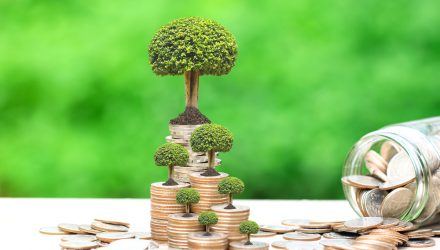Green bonds continue to rise in popularity, and that’s been the case this year after a tumultuous 2022 for the bond market. Issuance in green bonds is expected to see strong growth throughout the rest of the year.
“Following a year in which contractionary monetary policy and macroeconomic uncertainty constrained overall global bond issuance, it is expected that global green, social, sustainable, and sustainability-linked bond (GSSSB) issuance will return to growth in 2023, reaching $900-1000bn,” a S&P Global Environmental Analyst blog expertly noted. “Green bonds look set to remain the dominant form of issuance.”
Green bonds have been a popular investing vehicle in Europe, but the United States is also starting to catch up with the trend. That said, issuance in the U.S. is also set to witness record numbers with the help of government tax credits.
“For 2023, we expect a return to GSSSB issuance growth in North America, as economies in the region begin to recover in the second half of 2023,” the report added. “Nonfinancial corporate issuance, in particular, may rebound, and issuance volumes will likely increase to new highs as entities look to take advantage of tax credits offered by the Inflation Reduction Act.”
Ultra-Short, ESG Exposure to Bonds
The bond market continues to present the challenge of obtaining yield while also mitigating interest rate risk. One way is via short-term bond exposure or ultra-short if the investors is looking to park cash temporarily.
For the investor who is also seeking an ESG component, consider the Calvert Ultra-Short Investment Grade ETF (CVSB). The fund offers diversified short-term fixed income exposure to an actively managed portfolio of high-quality bonds of issuers that Calvert believes are demonstrating effective management of key ESG risks and opportunities.
As mentioned, one of the highlights of CVSB is its active management that offers investors more dynamic exposure to the bond market as opposed to a set-if-and-forget-it passive index. This aids to minimize rate risk, which, as mentioned earlier, is essential given the current tightening by the U.S. Federal Reserve.
Even if the Fed eventually decelerates its rate hikes, investors can still capitalize on bond price appreciation and mitigate rate risk if the Fed continues its hawkishness. Either way, it’s an alternate method to get short-term bond exposure if investors are looking to park their cash in a bond fund temporarily in order to extract a higher rate of return, as well as get exposure to the rising popularity of ESG screeners in the bond market.
“GSSSB issuance trends suggest that the asset class can be an important tool to help drive investment to meet climate and sustainability goals,” Environmental Analyst noted.
For more news, information, and analysis, visit the Responsible Investing Channel.

